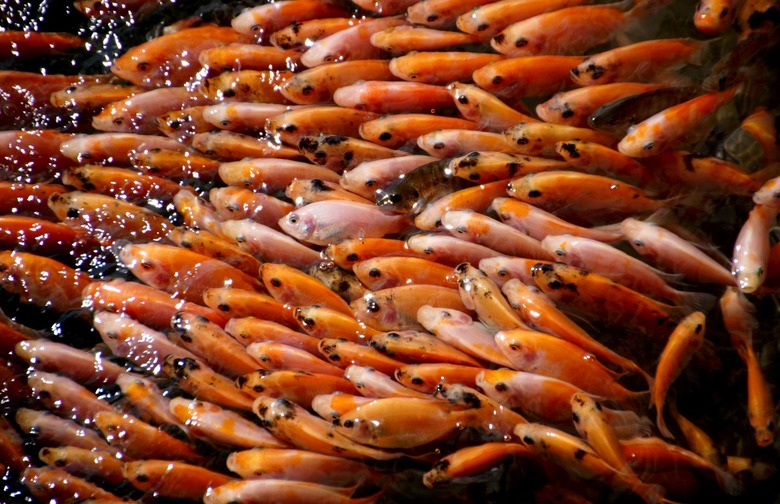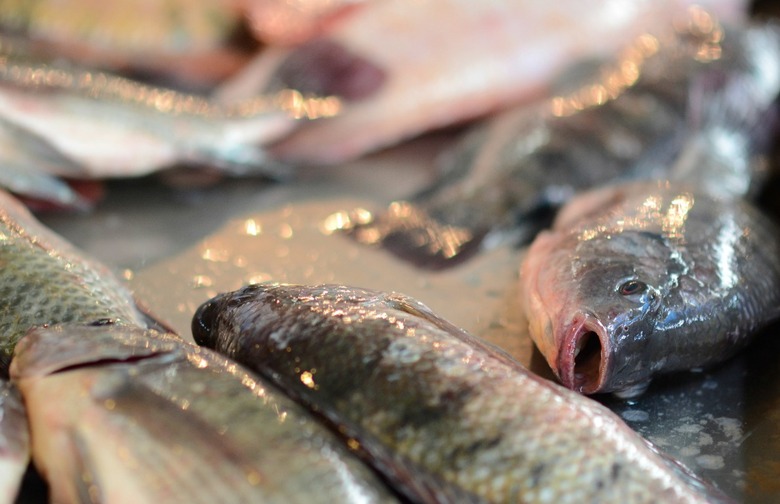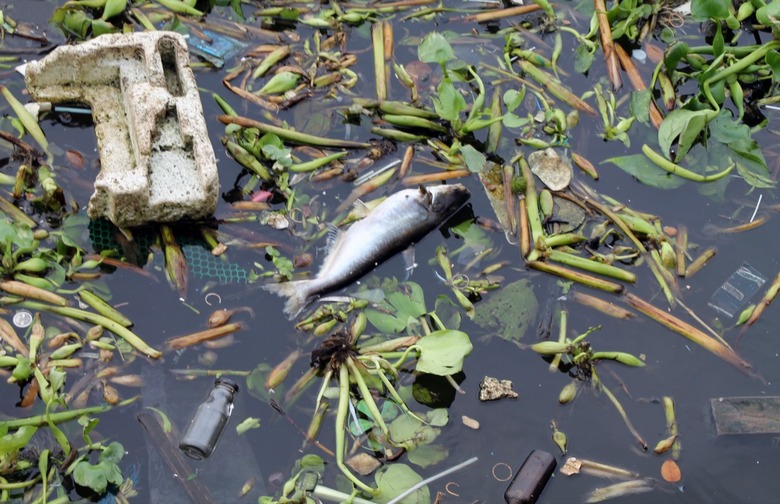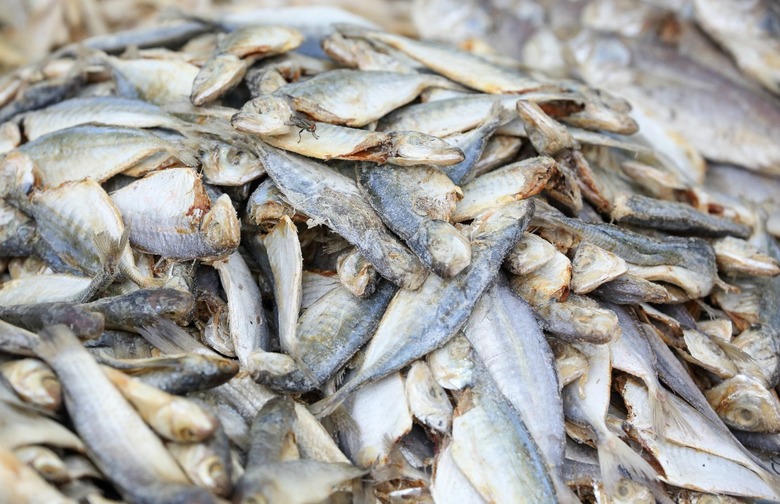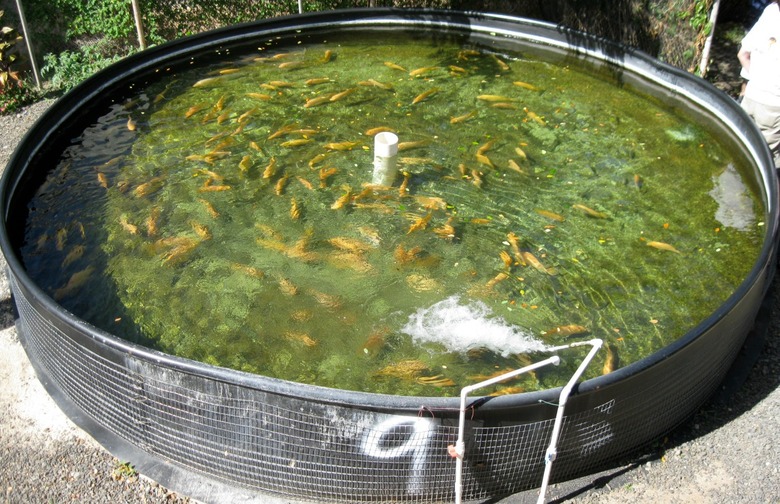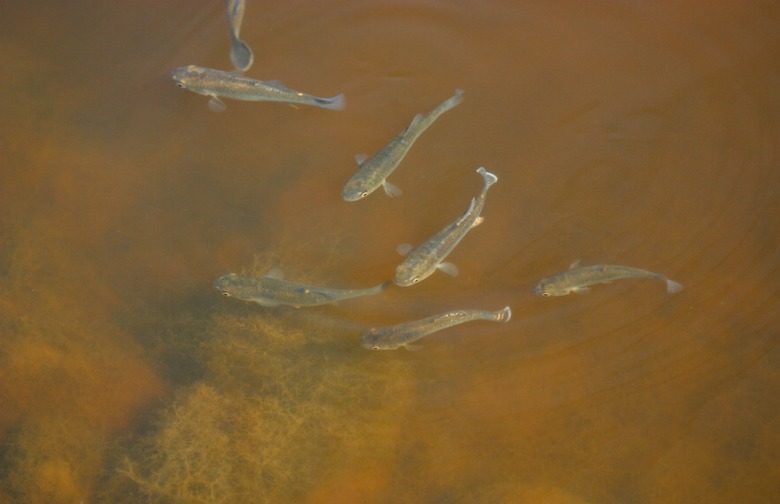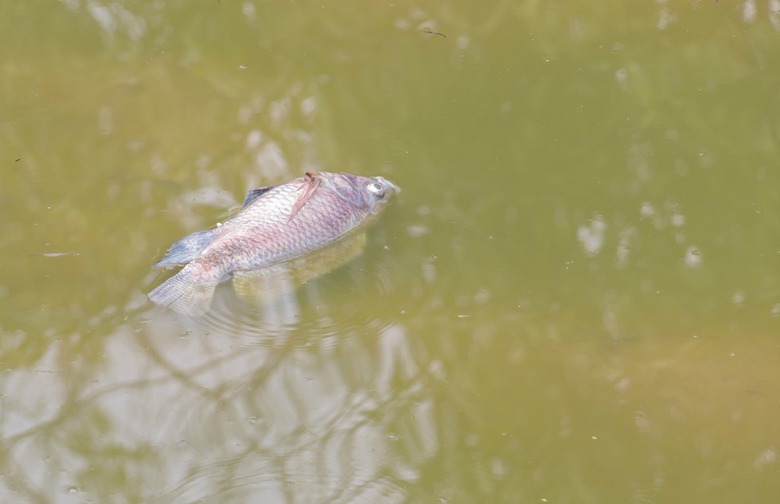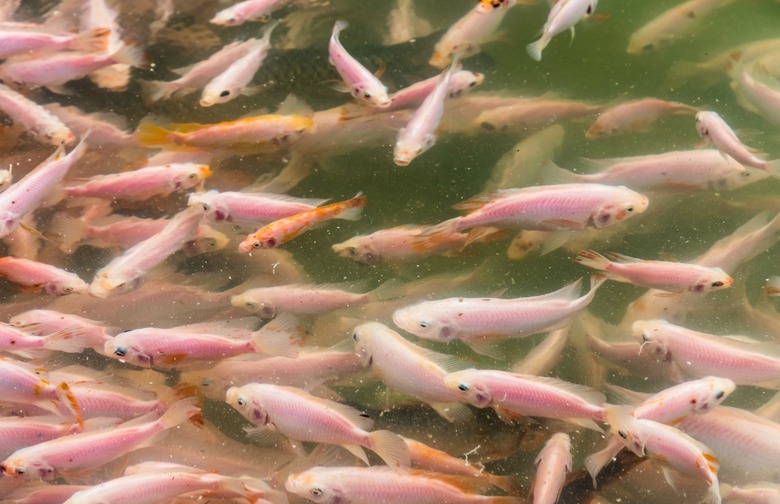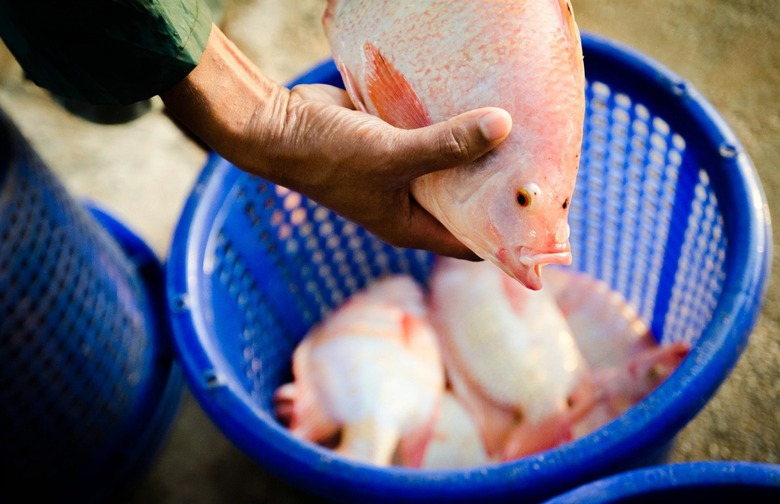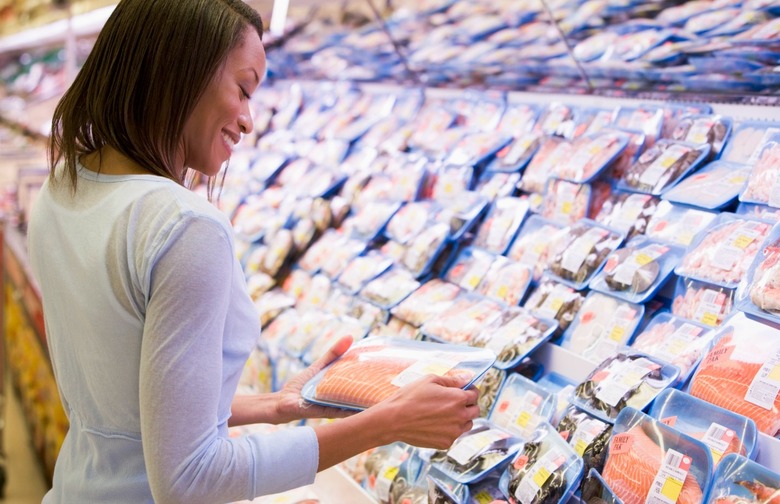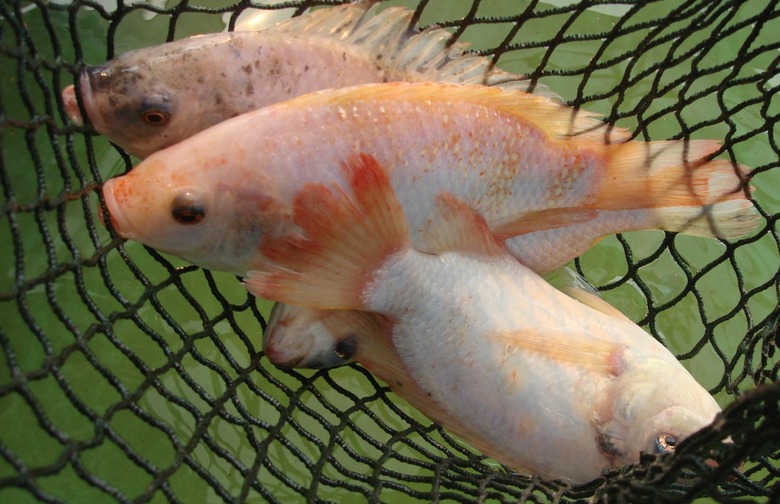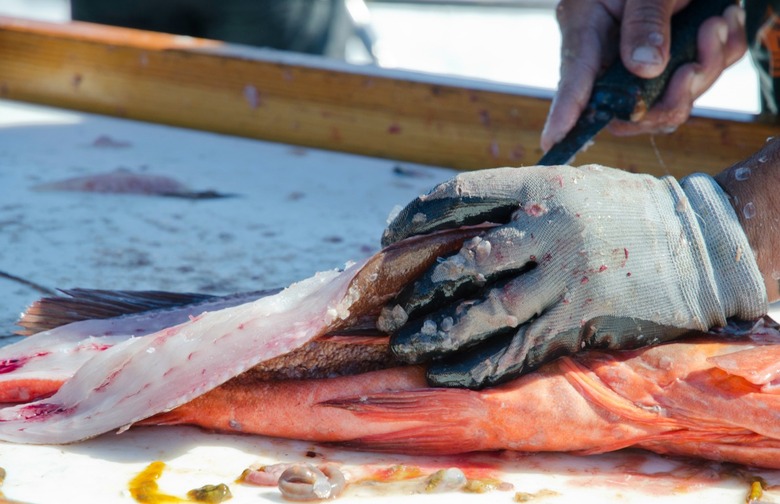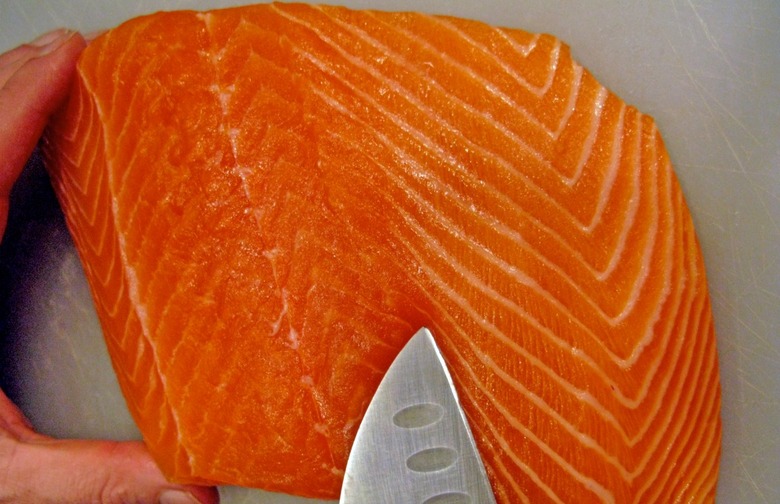14 Reasons One Doctor Has Stopped Eating Tilapia And Two More Question All Kinds Of Fish
There's something fishy happening in the world of seafood, and we're not quite sure how to handle it. While health concerns with foods as seemingly simple as a can of tuna fish have been raised by some, others are doing their best to remedy this and bring purity back to the seafood industry. Whether it's tuna fish, salmon, or tilapia, though, it's important that the entire food industry takes a step back and reassess the way fish are raised, processed, and served.
"Health experts are continually berating us to eat more fish," says Dr. Michael S. Fenster. But he warns us that "to simply bludgeon us over the head like a harp seal with the mandate to consume more fish without any regard to the type, character, and quality of our choosing is not only a dereliction of dietary duty, but downright dangerous."
Antibiotics and Pesticides
"If you crowd your fish into ponds [that contain] oozing heavy metals, pesticides, and other toxins from industrial effluent, it is not hard to imagine that a few of the fish might become a tad susceptible to infection," says Dr. Fenster. "A recent study sampled imported seafood and found imported tilapia treated with oxytetracycline, and a farmed salmon marketed as antibiotic free was actually found to contain traces of virginiamycin [both are antibiotics]. Other studies have found tilapia from China treated with malachite green [a dyestuff and antimicrobial] and nitrofurans [another antibiotic]. While the levels found were below the regulatory limits, studies have shown that such usage can promote the development of bacterial antibiotic resistance. Humanely and naturally raised products taste better and are, quite simply, better for you."
DDT and Other Contaminants
"Some tilapia imported from China has shown significant concentrations of the pesticide DDT and polyaromatic hydrocarbons (PAHs), which can be associated with industrial pollution," according to Dr. Fenster. "Over 85 percent of all US seafood is imported, but the FDA checks just 2 percent for contaminants which include drug residues, microbes, and heavy metals. This is in contradistinction to Europe (20 to 50 percent), Japan (18 percent), and Canada (15 percent). And when the FDA does examine for drugs, for example, they currently search for only 13 drugs. Europe currently tests for 34 drugs. The result was that in 2009, 0.1 percent of all imported seafood was inspected for drug residues."
Fishy Factors That are Often Out of Reach
In order to remain safe while consuming any seafood, Dr. Fenster believes that you need to know exactly what it is you're buying, where it came from, how it was raised (if it's not wild), and how it was processed.
GMOs in Farmed Tilapia
"If the toxic environment, overcrowding, steroids, and drugs weren't enough," says Dr. Fenster, consider the fact that tilapia "can't even get a real meal. Because tilapia naturally consume algae, aquatic plants, aquatic insects, and the like, they are readily adaptable to an inexpensive diet. This diet is usually predominantly made from genetically modified corn and soy."
It’s All in the Name
"Shakespeare observed that 'a rose by any other name would smell as sweet.' Which is, of course, completely true," says Dr. Fenster. "It would, however, be a lot less popular at the florist if that other name happened to be 'rotting carcass stink blossom.' Tilapia, besides sounding like some horrible infectious tropical disease, essentially just means fish. It is the Latinized form of the Tswana word tlhapi meaning 'fish.' I wouldn't walk into a restaurant and order something simply labeled 'cow' from the menu, and I have no intention of doing the same for 'fish' no matter what kind of fancy foreign fiction they spin about it."
Don't order "cow." Instead, get a prime cut of beef from one of America's 50 Best Steakhouses.
Lack of Omega-3s in Farmed Tilapia
"Many experts believe the beneficial, healthful effect associated with the consumption of fish and seafood has to do with the consumption of the omega-3 polyunsaturated fatty acids (PUFAs) that are found in many varieties of such comestibles," says Dr. Fenster. "However, because the diet of many tilapia farmed in other countries is not their natural diet, they tend to be significantly lower in terms of omega-3 concentration than their wild relatives [and] tilapia is not a fish naturally high in omega-3 PUFAs to start. Because anti-inflammatory omega-3 PUFAs exist in a natural dynamic balance with the more inflammatory omega-6 PUFAs, when you have less of one you will have more of another. Higher levels of pro-inflammatory compounds like arachidonic acid and a higher omega-6 to omega-3 ratio make tilapia a less attractive choice for those looking to boost their intake of beneficial, anti-inflammatory omega-3 PUFAs."
Lax Water Quality Standards
When Dr. Fenster refers to muddy waters, he's not referring to the blues legend McKinley Morganfield. "If tilapia were the piscine equivalent of the Hoochie Coochie Man, I would be having it for breakfast, lunch, and dinner. Unfortunately, it turns out that tilapia is one of several commercially farmed aquaculture species susceptible to unpalatable effects caused by the accumulation of geosmin and 2-methylisoborneol. These accumulate in the presence of blooms of certain cyanobacteria that are often present in the water when quality standards are lax. It transforms what looks like a delicious, light, delicately tender, and flaky fish fillet into a mouthful of swamp thing."
Lead, Chromium, and Other Metals in Imported Tilapia
"Certain areas of the world where tilapia is produced (read China) have been dealing with the issues of heavy-metal pollution in their ecosystems because of rapid industrialization and poor ecological oversight," Dr.Fenster points out. "The result is unacceptable levels of cadmium (Cd), chromium (Cr), copper (Cu), nickel (Ni), lead (Pb), and zinc (Zn). Studies looking at some Chinese tilapia exports found unacceptably high levels of lead and chromium in the fish. These fillets may be the only main course on earth you could properly pair with a glass of water from Flint, Michigan."
Methyl Testosterone is Used to Stop Tilapia From Breeding
"Tilapia may be the most politically incorrect fish you can put on your plate," says Dr. Fenster. "Tilapia may be known within aquaculture circles as 'the aquatic chicken,' but they breed like freaking rabbits. Which means if you are growing a group of tilapia in a pond and you have a mix of boys and girls as they get older, what you end up with is a lot of small fish of varying ages. This is not good for the McFillet business, where you need fewer but larger and more homogeneous schools. The solution? Treat the fish with steroids, [specifically] a form of testosterone known as methyl testosterone, which forces all the fish to become phenotypically male."
Most Tilapia Doesn’t Come From America
"At the risk of sounding Trumpian," says Dr. Fenster, "China is killing us in trade. And they are executing these machinations for world domination through the export of tilapia. With over 95 percent of the tilapia consumed in the United States being imported, and almost 75 percent of it coming from China, the odds are that unless you can accurately and precisely source your tilapia, China is exactly where it originated. Add to the fact that this fish is popularly added to processed fish food items including patties, fingers, and a plethora of other unknowable deep-fried depth charges, and it is easy to see why it is critically important to source, like everything else you eat, your fish."
Seafood Doesn’t Yet Have an Organic Labelling Protocol
Dr. Fenster reminds us that "if you are looking for labels to help you determine if the fish were raised on a diet of GMO corn and soy, forget it. The USDA does not currently have any guidelines or mechanisms in place to label seafood as organic. It is simply differentiated by whether it is farmed or wild caught."
Sourcing Issues Can Lead to Safety Concerns
"Tilapia is currently the world's most popular farmed fish after carp," according to Dr. Fenster. "Depending on your source, it's the third or fourth most commonly consumed type of seafood or fish in the United States. While the country of origin labeling (COOL) was repealed for meat and poultry in the summer of 2015, it is still enforced for fish and seafood. While it may be difficult to find them, there are reliable producers in Central and South America. Even more difficult may be to find the producers in the United States, but many of these adhere to the highest standards of aquaculture and produce a product worth perusing. If you can verify it, a wholesome, naturally and humanely raised delicate, mild white fish like tilapia is arguably worth serious consideration as an addition to your plate. After all, if it was good enough for St. Peter, it should be good enough for me. I just don't want my eating it to be the reason I meet him."
Natural Fish Diets: An Ocean of Potentially Harmful Possibilities
Susan Blum, MD, founder and director of the Blum Center for Health, co-owner of Organic Pharmer, author of The Immune System Recovery Program, has more general concerns about where fish come from and what each fish eats and is exposed to. "I believe the most important thing is to know where your food comes from AND to know what you are eating has [eaten]," she says. "You always have to go one step deeper; it could be [regarding] plants, animals, or fish. Given that fish come from a very large ocean, I know the least information about fish, where it came from, and what it ate. Even if a fish is wild caught, you don't know where the fish has been or what it's been exposed to."
The FDA’s Approval of GMO Salmon
Jennie Ann Freiman, MD, creator of the wellness blog OObroo Tips, also fears that fish provide more risks than benefits. She's especially wary of a recent approval of GMO salmon by the FDA. "The benefits of eating fish do not outweigh the risks, in my opinion, which is why I gave up eating fish in 2011. Aquatic environments in the wild are polluted with agricultural and industrial toxins, municipal waste, and radioactive material. Modern aquaculture produces fish that have been treated with antibiotics, pesticides, and anti-fouling paints, and the actual production facilities are environmentally hazardous. To make matters worse, late in 2015, the FDA approved GMO salmon and is not requiring labeling to advise consumers who might want to avoid Frankenfood."
